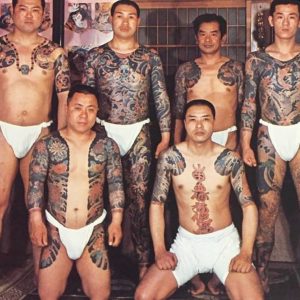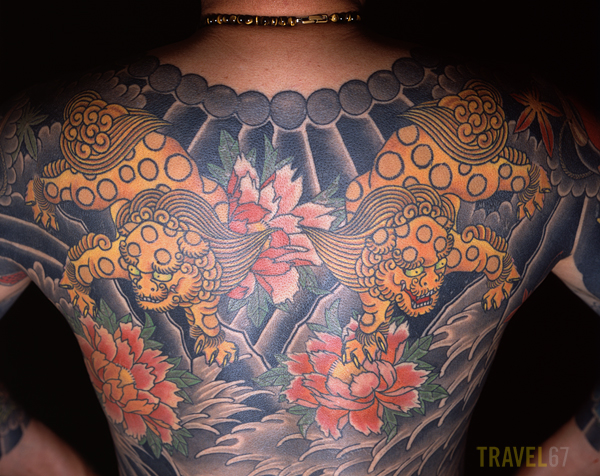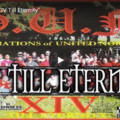
Irezumi is a form of traditional Japanese tattooing practiced in Japan for centuries. The art consists of colorful intricate designs inspired by Japanese mythology and woodblock prints. The tattoos usually tell a story that shows the values of bravery, honesty, and perseverance. Irezumi has a complex history involving the criminal underworld of the country. The first time Irezumi were associated with criminals was in 300 AD when tattoos were used to mark and identify criminals. In the 1800s, Japan stopped tattooing its criminals and people started hiding their criminal tattoos within larger more decorative pieces. This led to a rise in the popularity of tattoos. However, in the mid-19th century, Japan was focused on presenting itself as a more “civilized” nation to avoid conquest and therefore banned all “barbaric practices”. Tattoos were included in these practices and they would remain banned until the U.S. occupancy removed them in 1948.
Irezumi’s association became the strongest when used by the Yakuza. The Yakuza are a Japanese organized crime syndicate that started in the 17th century. They used tattoos, especially Irezumi, to identify themselves as part of the organization. It was also considered part of the initiation process since it was considered painful. The pain was to test their dedication, discipline, and belonging to the gang. Yakuza members would often have full-body tattoos that covered their chest, back, arms, and legs. Due to their association with the Yakuza, tattoos were and still are often hidden in order for the members to remain anonymous. Their goal of remaining anonymous led to a special style of Irezumi called Horimono. The Horimono style consisted of a full body tattoo that stopped at the neck, wrists, and ankles. It was also common to leave a blank stripe of skin through the middle of the chest to allow traditional kimonos to be worn.
Despite past cultural stigmas, Irezumi still remains a popular form of artwork. Many people get these types of tattoos in order to connect with Japanese culture. Newer generations have also become more accepting of tattoos in general, especially in western cultures. One of the main reasons for the rise of acceptance was the globalization of Irezumi. Westerners have taken parts of the Japanese tattoo style and infused it with their own style to create hybrid pieces that are well-liked. In Japan, however, the association between Irezumi and the Yakuza is still prevalent and has hindered the process of acceptance. A westerner with an Irezumi tattoo is seen differently than when a member of the Yakuza with one. In order to blend in more with the general public, the Yakuza have dialed down on their use of Irezumi. This will in turn most likely open up Irezumi to the general public as its association with criminality lessens.








This is a well-written piece, thanks for shedding light on the complex relationship between Irezumi and the Yakuza. Prior to this, I didn’t know anything about the subject. The article does a great job of balancing historical narrative with cultural nuance. One thought that came to me while reading is that it’s intriguing that younger generations, especially in the West, are reinterpreting these motifs in hybrid styles. I’ve seen these tattoos increasingly often with differing interpretations. A favorite musician of mine, John Mayer, has a sleeve in this style on his left arm. Considering that I know little to nothing about Japanese culture, it was shocking that the social stigma against tattoos still persists in Japan while it’s often celebrated in Western culture.
This was really interesting to learn more about! When I visited Japan for the first time, I was with my friend and her mom, who were both born in Japan, and her mom was raised there. Whenever we passed tourists with noticeable tattoos, you would see numerous people, including them, turning and staring to see the tattoos. Continually, my friend was not allowed to get any tattoos because she had to remain “clean” and “classy”. It was interesting to compare reactions to tattoos in Japan vs. in America, where people barely blink an eye at people covered in tattoos, and many parents don’t care if their child gets them. I remember learning that if you saw someone in Japan with tattoos, they were likely Yakuza. However, as time has gone by and since I have gone back, I noticed more Japanese throughout the streets of Tokyo with tattoos that remind me of the trends you see back in America. It almost felt like it was becoming more normalized and less associated with crime and gangs. I wonder how that will continue to change.
I found this to be an interesting article. Considering the fact that the tattoos relate to values of bravery, honesty, and perseverance, I wonder what led to it being associated with the criminal underworld. I guess the association between tattoos and criminals wasn’t just a western thing, as we talked about in class.
I remember watching some travel vlogs of foreigners in japan and they were talking about if you have tattoos, you have to be mindful of the kind of bathhouse or onsens you go to since some do not allow tattoos. I’m sure Japan also has some strict rules on tattoos in the workplace as well but I just found it a bit interesting that they would ban tattoos in a place where one bathes or relaxes in the hot springs.